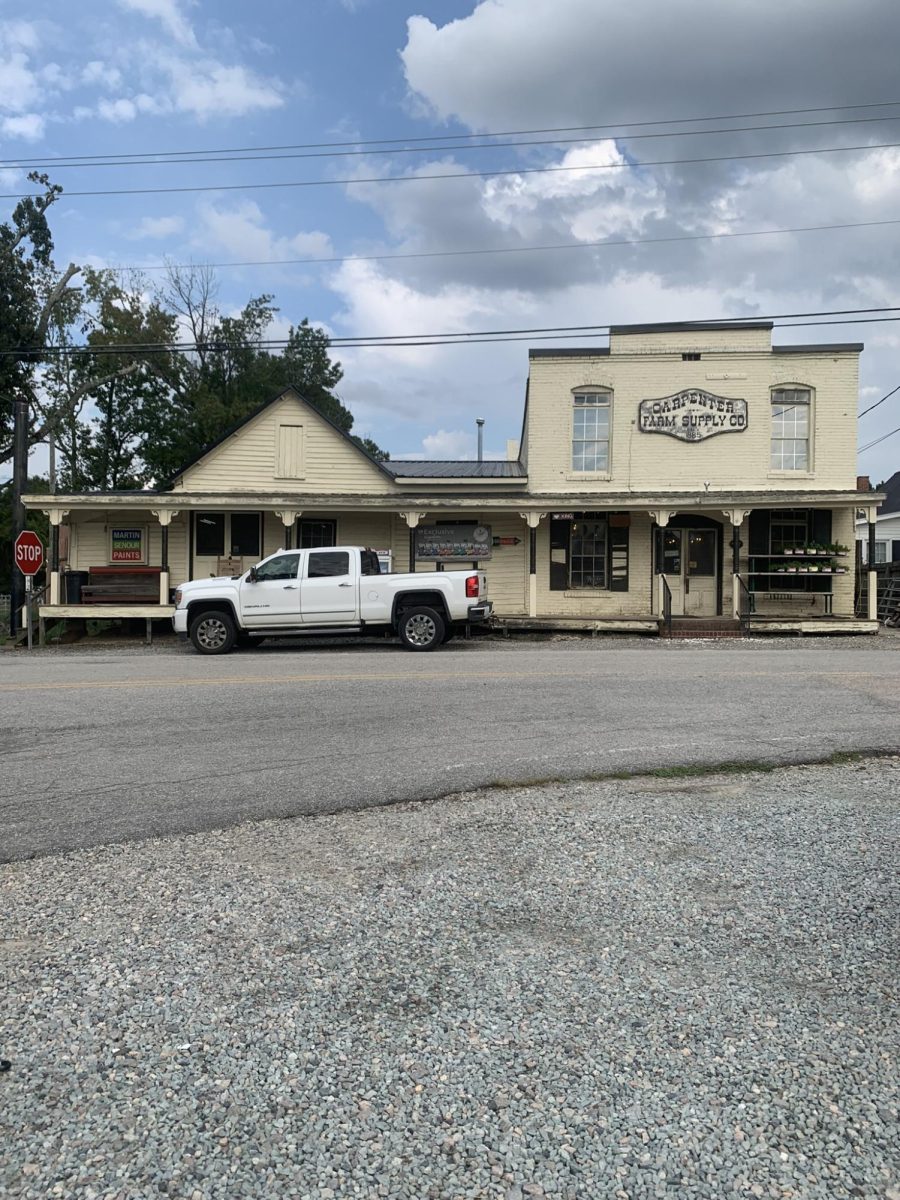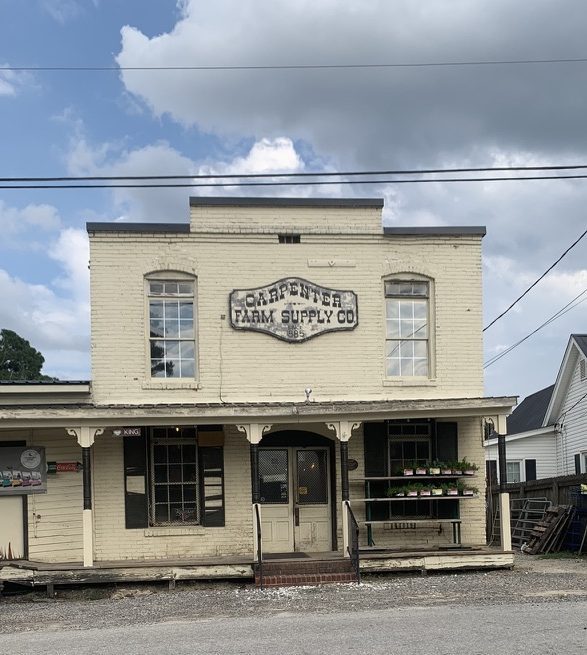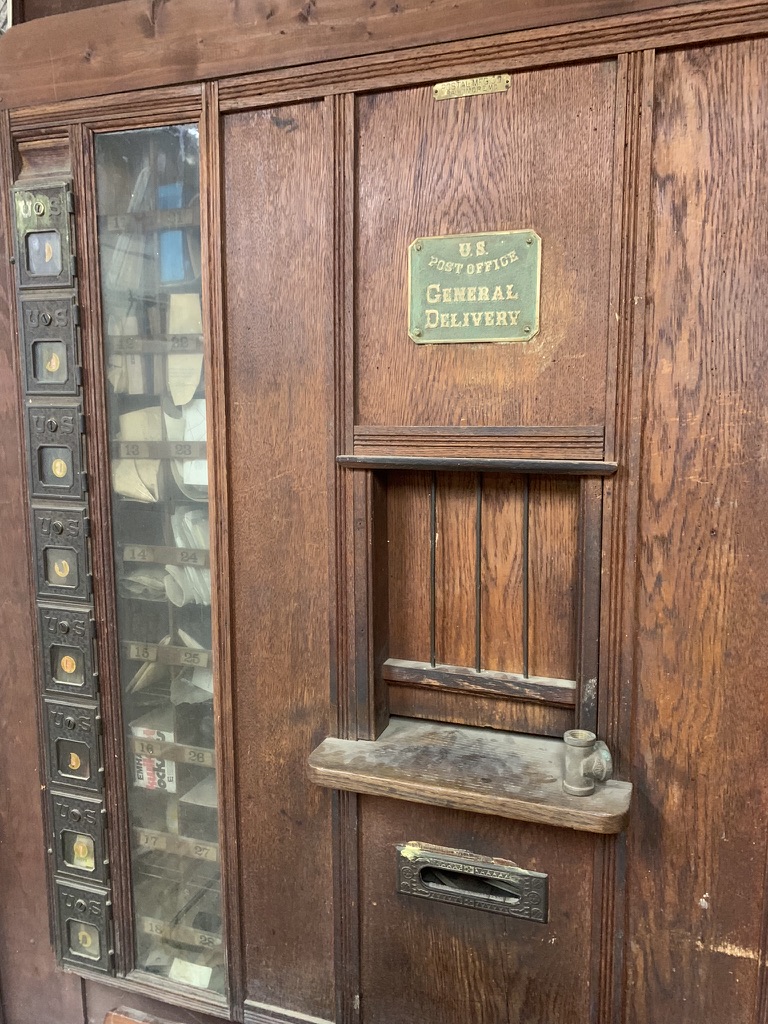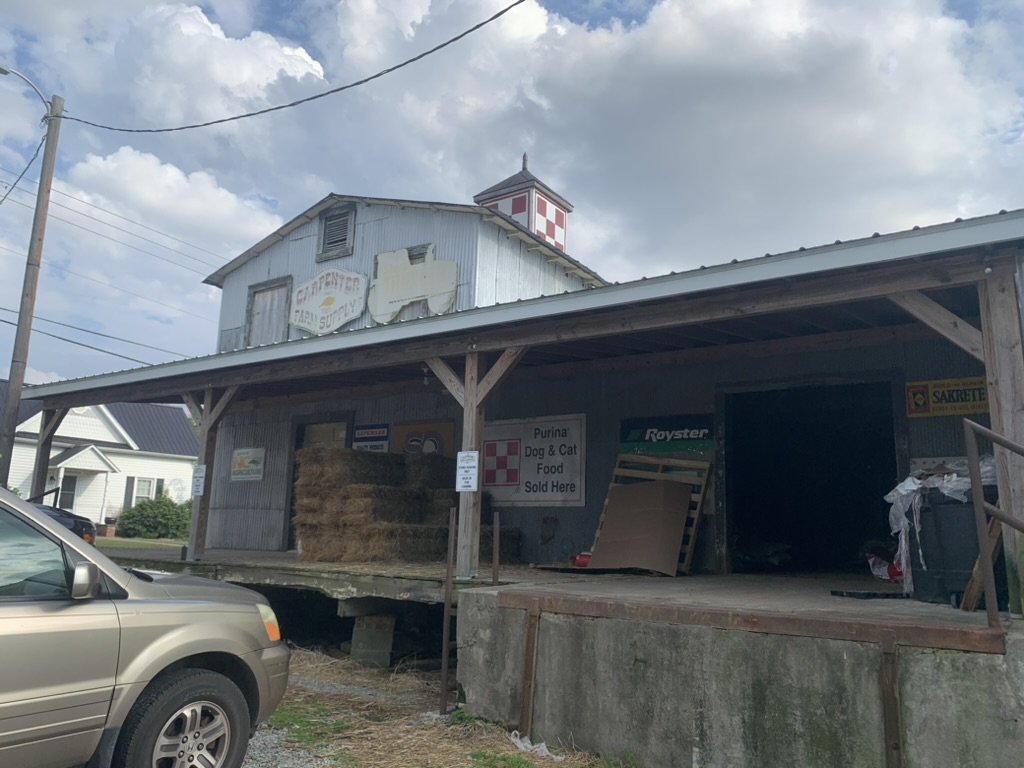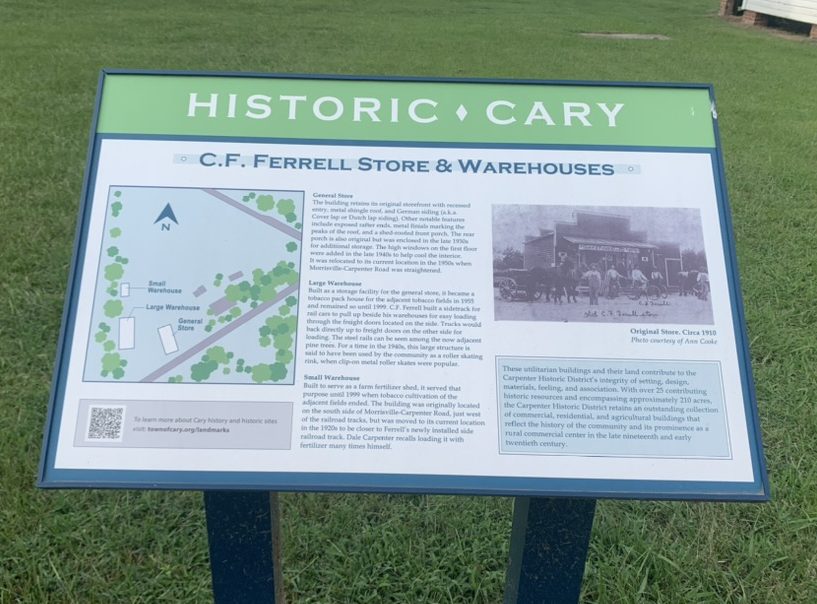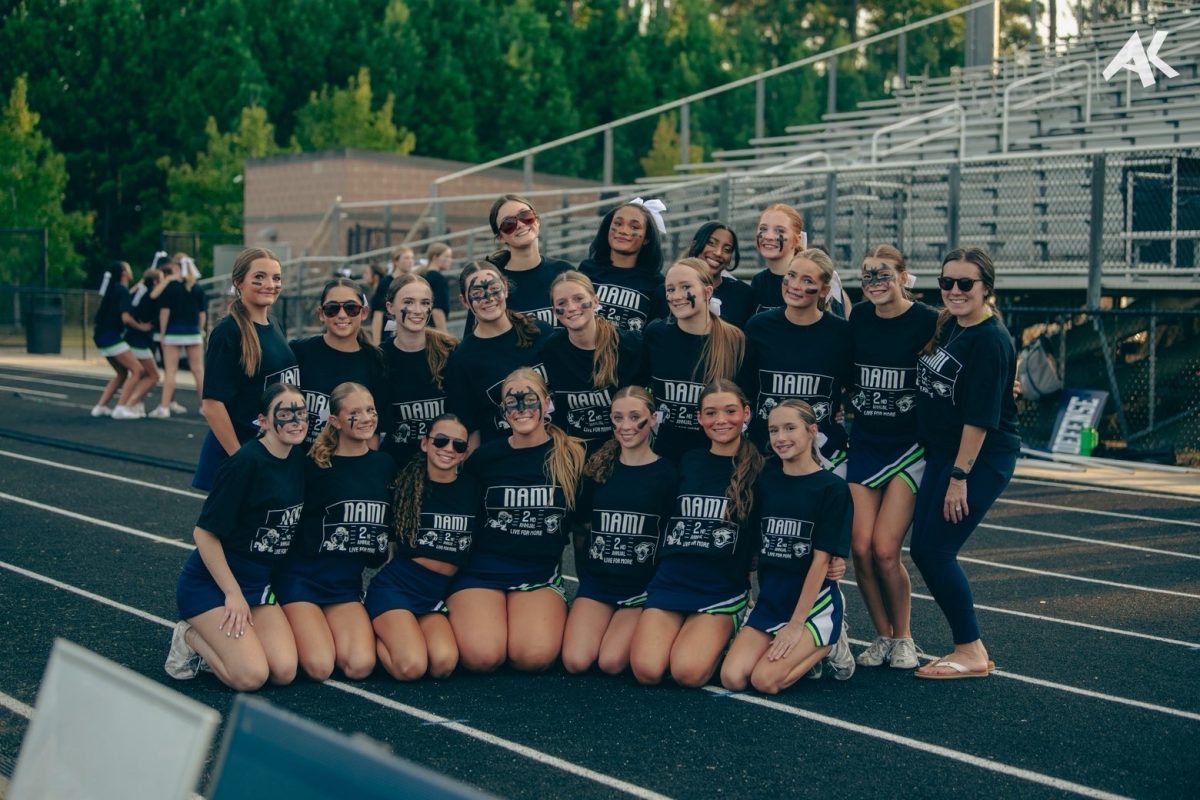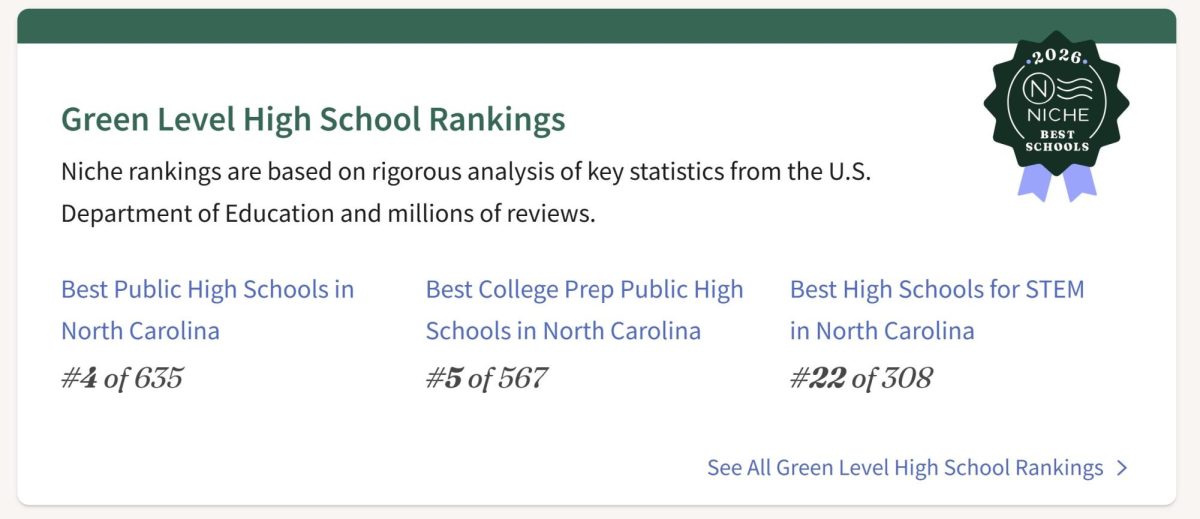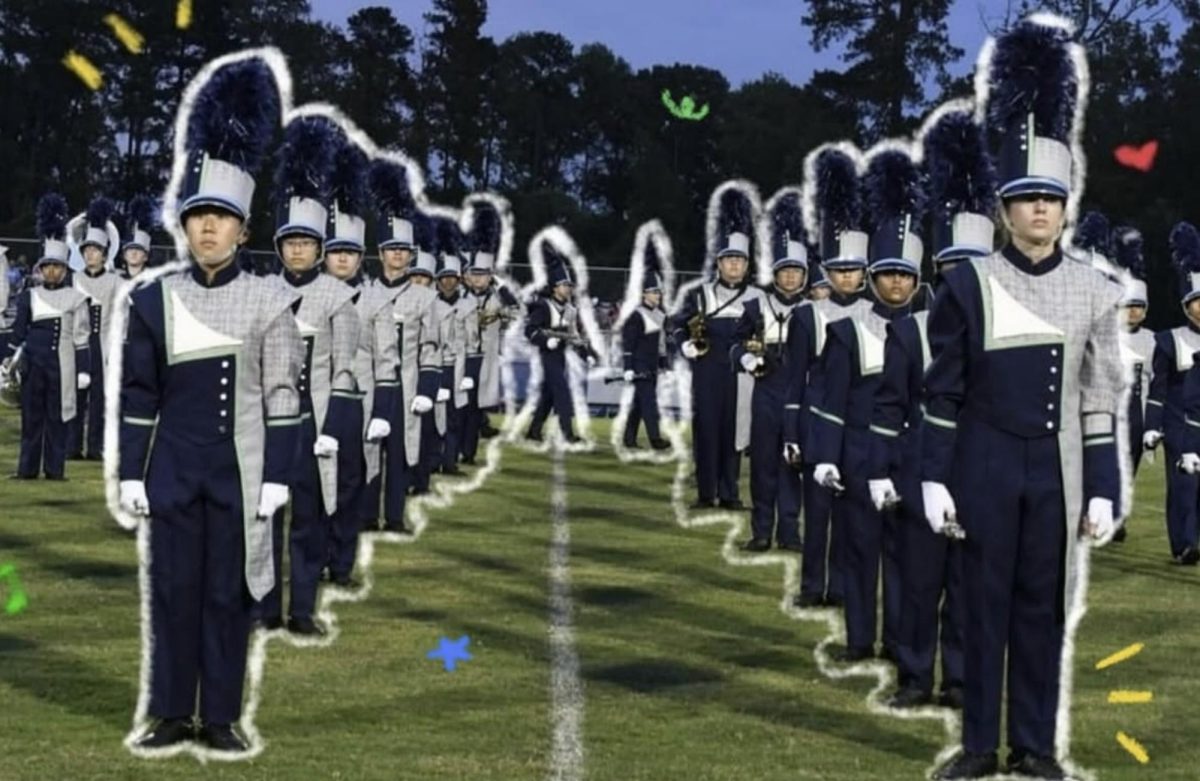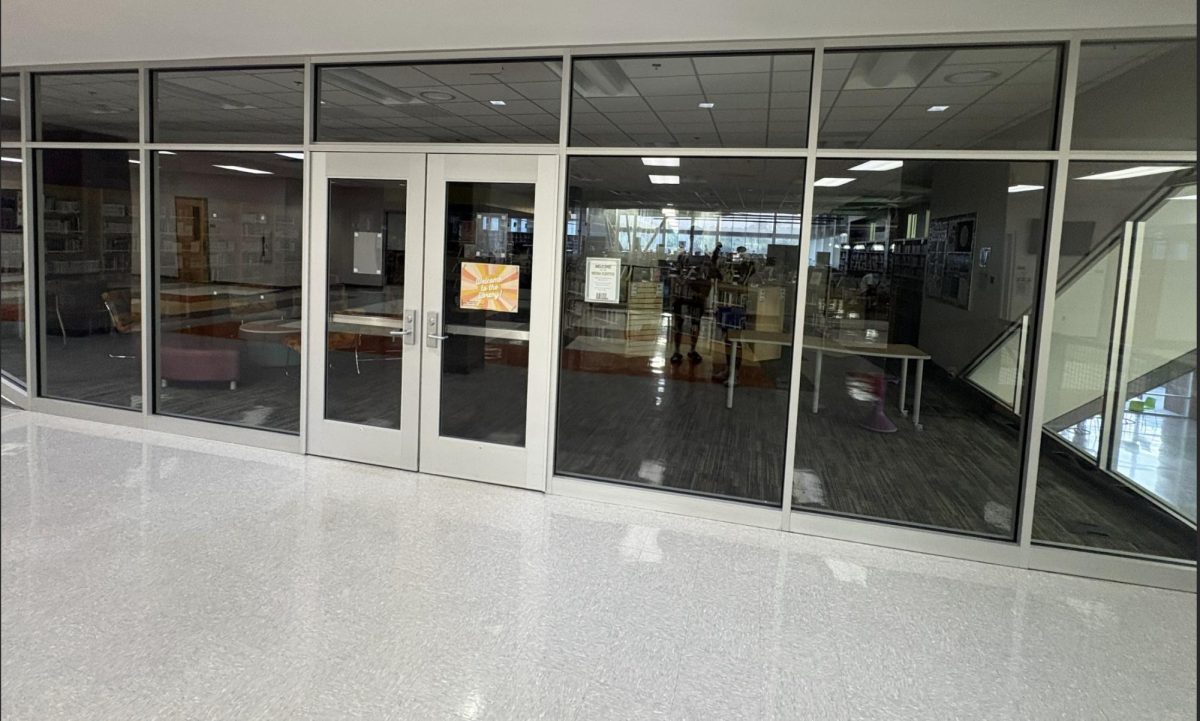The town of Cary is home to three main historic districts: Town Center, Green Level, and Carpenter. In this article, we’ll be delving into the lost history of the Carpenter Historic District, and what its buildings reveal about the origins of the town in which many at Green Level High School live.
The Carpenter Historic District’s main hub of notable buildings is centered around Carpenter-Upchurch Road and Morrisville-Carpenter Road. Many locals know its facades as landmarks on the way to Phillips Farm, or as the somewhat dilapidated structures behind the new Bojangles on Highway 55. This comical juxtaposition of old and new is truly a sign of the times, but not all change is good change.
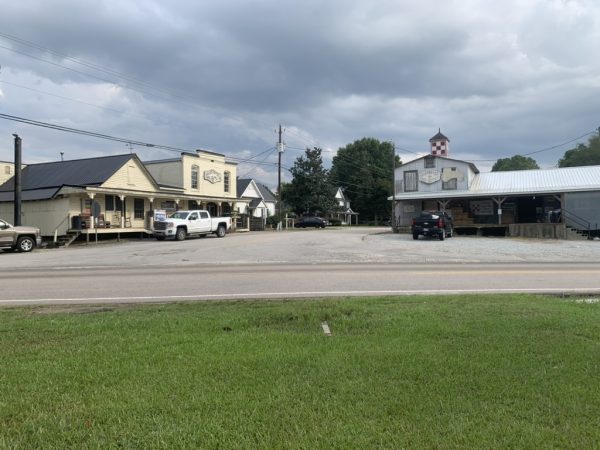
Carpenter Farm Supply Company & Carpenter Store
What drew my attention to this place year after year as I’d thoughtlessly driven past was the Carpenter Farm Supply Company (1933 Morrisville-Carpenter Road). The old-timey lettering of the sign caught my eye, as did that of its neighbor, the Carpenter Store (SW Corner, Morrisville-Carpenter & Carpenter-Upchurch Road). The absent-minded recognition of these buildings I’d gotten used to seeing my whole life ignited a sudden curiosity in me to visit.
The Farm Supply Company building, built circa 1895, is said to be the “focal point of the crossroads.” It was even designated a Wake County Landmark in 2010. The store was built by the late deputy sheriff, school board member, and postmaster William Henry Carpenter, and is owned and operated by his descendants today. Upon entering the store, I was met with what I can only assume was a Carpenter family gathering; several men were sitting around a furnace in the unfrequented store, talking with a warm twang not often heard in suburban Cary. I wasn’t greeted until I made a point to greet them, and was met with looks of skepticism. I came to realize that I must have been an anomaly to them; not many people who aren’t Carpenter Historic District locals come by these buildings very often.
The store was much larger inside than its facade indicated. It was chock-full of what generous historians consider historical artifacts; there were many vintage-looking decorations, some definitely genuine, others possibly there to drum up an authentic feel. Tobacco and rubber boots hung from the ceiling, jars of local-made North Carolina jams lined the dusty shelves, but it felt more like a home than a shop. I made a point to locate the cash register to ensure I wasn’t actually intruding.
When one takes a left after entering, veering out of the main part of the store, it’s striking how large the building becomes, and how different the extension—added in 1983—looks from the original structure. The walkway to pass between the two worlds showcases the original Carpenter Post Office. As I walked from the wooden, cabin-like area into what appeared more like an abandoned pharmacy from an apocalyptic TV series, I was struck with curiosity. It felt like I’d walked into a liminal space. The section looked like it hadn’t been maintained since the 80s, with dust and grime being frequent. Although, a few items looked as if they’d just recently been restocked. The store in its entirety had quite the array of items but seemed like a hardware store for the most part. What enticed me most of all is that I could even spot where the original building ended and the new store began; a store inside of a store.

To the right resides the kindred Carpenter Store (circa 1895), also dubbed a Wake County Landmark in 2010. This building serves the more agricultural needs of its customers as opposed to mechanical, flaunting many trucks parked in its wake to be loaded up with feed, hay, or whatever materials a farmer could ever need. The Carpenter Store is referred to by long-time residents of the area as the “Union Hall,” due to its upstairs having once served as a meeting room for a farmers’ organization. This is consistent with the theme of this having been a farming town back in its prime. The building had also served as a Masonic lodge as well until at least 1920.
D. Judson Clark Machine & Garage
Adjacent to the Carpenter Farm Supply Stores is the D. Judson Clark Machine & Garage building (S. side, Morrisville-Carpenter Road, circa 1920). Its exterior is barren compared to pictures of it taken in just the last ten years, with nothing indicative of its original function. D. Judson “Judd” Clark built this structure as a machine shop, and it acted as a car garage and dealership. Members of the Russell family owned this property in the late 1900s as well. There isn’t much information out there on this building, its late owners, or its history, but according to the Friends of the Page-Walker Hotel’s “Cary National Register Historic Districts & Properties 2013 Review,” the garage was open for business by current tenants within the past decade, but upon my visiting, there was no signage indicating such. The doors were locked, and windows boarded up; there were no signs of life nor commerce.
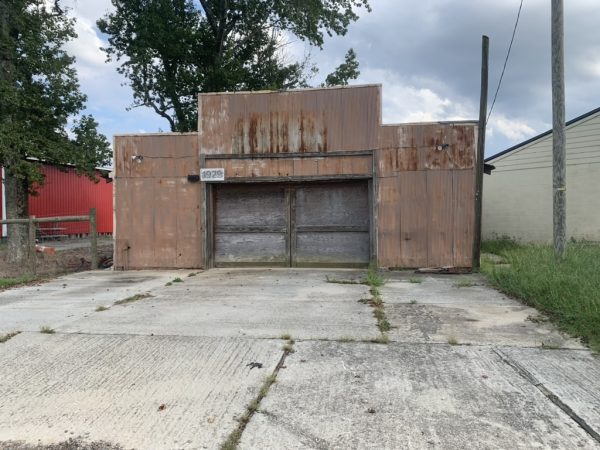
C. F. Ferrell Store & Warehouses
Across the street is another little cluster of buildings: the C. F. Ferrell Store, the Large Warehouse, and the Small Warehouse (N. side, Morrisville-Carpenter Road, all circa 1916). The store is a two-story white building with a porch, almost resembling that of a home. The building that stands today was C. F. “Charlie” Ferrell’s second store, which he opened in partnership with Mallie Butts. It was built to replace their previous store building that was open from about 1910 to 1915, not too far from where the current building stands today. Local history tells us that the Ferrells and Carpenters were competitors, both running similar general store businesses, as well as competing to have control of the post office that I saw in its final resting place in one of the Carpenter stores.
It is said that Ferrell went out of business in the early years of the Great Depression, leading to various successors of this general store until the 60s, when it was turned into an antique shop. Walking the perimeter, I noticed it was propped up off of the ground by stacks of bricks, and upon further research discovered that this was due to the building being moved a few feet to the east in the 1940s when Morrisville-Carpenter Road had been straightened.
The building was locked when I visited, but passersby can peer through the glass and see what remains of the old store. Perhaps the town of Cary will refurbish the building and open it up for some sort of public display of the different parts of the store pictured online, such as the old elevator.
The two warehouses that sit behind the store are a sight to behold, striking me as the perfect set for a horror movie. They appear quite old but are clearly sturdy and have stood the test of time. They’re made mostly of metal (some wood) and are also raised up off of the ground with bricks, presumably for the same reason as the C. F. Ferrell Store. The larger warehouse was built as a storage facility for Ferrell’s store, and the smaller one stored fertilizer. The doors were of course locked, so I tried shining my phone flashlight through the keyholes and was met with darkness and random scraps of wood. Turning the area into a park while incorporating and maintaining the three buildings has been considered, so this may be something we see in coming years.
New Developments: What’s At Stake
According to an article about the Carpenter stores by Cary Magazine from June 2020, the town of Cary formulated the Carpenter Community Plan in 2005 to revitalize the Carpenter Crossroads to be a “lively, unique historical and cultural destination.” A major component of the plan was to realign and widen Morrisville Carpenter Road and link it to Carpenter Fire Station Road. At the time of this article, the plan was projected to be completed in 2022, but according to carync.gov, it is now estimated to be fulfilled this coming winter.
The owners of the Carpenter Farm Supply Company and Carpenter Store, Dale and Joel Carpenter, have openly expressed their concern for the nearby development. While the town feels that closing this crossroads will give it a more rural, historically accurate feel due to lessening the passing traffic, the Carpenters disagree with their method of preservation. “The town is going to close this intersection here, Morrisville Carpenter at the railroad. We’re really concerned, because that’s been the major artery for us for many, many years coming off of 55,” Joel told Cary Magazine. This change could have the opposite effect intended, by cutting off a stream of customers that keep the stores up and running.
Public Interest in Local Historical Landmarks
The disappointing reality is that most locals don’t really have an interest in exploring or supporting these historic buildings unless they’re made more palatable to them with changes by the town. This is no jab at suburban Cary, for I myself hadn’t visited the buildings until now, even after having lived in Cary most of my life. For example, a park being created from the lot with the C. F. Ferrell Store and warehouses would generate more interest in the Carpenter Historic District, but consequently cause the buildings to experience more wear and tear. This would create more appreciation for the important buildings, but the drawback would be shortening their lifespan. The ideal course of action would be to strike a balance between appreciation and preservation that does not teeter too far toward one extreme, but this is a difficult compromise to come to, one that I’m not qualified to suggest will full confidence.
Local History In Schools?
The last question I find myself coming to after having visited these buildings and reading about them is this: should we teach local history in school? I understand why national and world history have their substantial places in our curriculum, of course, but teaching local history would have significant benefits as well.
It’s true that teaching local history in every high school across the country would be a difficult thing to standardize, but I think that implementing it on a county or even a school level would be worth it. In terms of Green Level, we have our own historic district (Green Level Historic District) right down the street, one that I’d be curious to touch on in a subsequent article. I would argue that being informed on this history as part of your high school education, such as at Green Level, would give the student body a more unified feel, providing all students with a common history. While I admit it should also be the responsibility of townspeople to learn local history, it’s a hard thing to take the time to dive into without being initially informed in a classroom setting. Most things in our eyeline look modern, so it’s difficult to imagine a history that preceded it.
Knowing the history of the land you tread upon makes it a more fulfilling place to live, and makes you more cognizant of how you treat it. I’d encourage everyone, even if you think you live in the middle of nowhere, to seek the local historical knowledge not often taught to us in schools. Chances are, you’ll learn something that changes your perspective on the town you live in.

